The Gift of South Dakota
Subscriptions to South Dakota Magazine make great gifts!
Subscribe today — 1 year (6 issues) is just $29!
Alcester’s Music Man
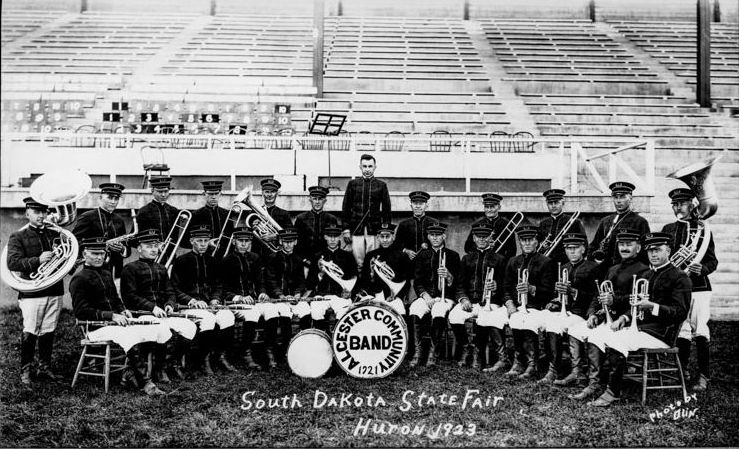 |
| DeeCort Hammitt organized the Alcester Community Band in 1921 and directed it for 25 years. Hammitt, an Alcester banker and musician, is best known for composing the state song, "Hail, South Dakota." |
WHEN DIGNITARIES GATHERED in downtown Yankton in November of 2013 to officially begin South Dakota’s upcoming sesquicentennial (125th birthday), students from the city’s elementary schools were on hand to sing our official state song, “Hail, South Dakota.” My daughter, Elizabeth, a student at Beadle Elementary at the time, was part of the energetic young chorus. I remember her singing snippets in the car rides to and from school or at home in the evenings and feeling glad that she was learning a bit of our state’s history.
This summer, we were all gathered in our living room. The television was on but not tuned to a program, which meant that after a certain period of inactivity it went to sleep and reverted to its screensaver. Photographs that we’ve uploaded to our Amazon account travel via a Fire Stick and appear as a slideshow during these entertainment downtimes.
As we watched the images roll past, we saw our daughter, dressed in the patriotic red, white and blue dress that my wife had sewn in advance of that gathering nine years ago. I recalled speeches by the governor and lieutenant governor and the swing band that played well into the evening. But Elizabeth remembered none of that.
“What was I even doing there, anyway?” she asked.
When I reminded her that she and her classmates were there to sing the state song, it didn’t jog a single memory. “Hail, South Dakota,” with its lines praising the “Black Hills, and mines with gold so rare,” and our “farms and prairies, blessed with bright sunshine,” was long forgotten.
*****
LAURA BAKER AND her siblings, Jane Allard and Mark, Kurt and Paul Hammitt, grew up immersed in the culture of the state song because it was written by their grandfather, an Alcester banker and musician named DeeCort Hammitt. The five of them grew up in Elk Point, where their parents, Howard and Dorothy Hammitt, had taken on the mantle of promoting the state song. Every spring, the Hammitts would give each graduating Elk Point High School senior a card with a two-dollar bill and a copy of the song. Dorothy called schools around South Dakota to make sure they all had the music and lyrics. “Everybody wanted a copy of it, and every school played it,” Baker says. “Community groups sang it.”
“I remember having to sing it when I was in school,” Allard recalls. “I don’t know when it started to fade away.”
In fact, that’s not something they thought much about until Howard Hammitt died in 2012 and his children found an assortment of photographs and clippings about their grandfather tucked away in the service station that Howard ran for decades. They began to learn even more about DeeCort (pronounced DECK-ert) and worried that his legacy as the man behind South Dakota’s state song might disappear.
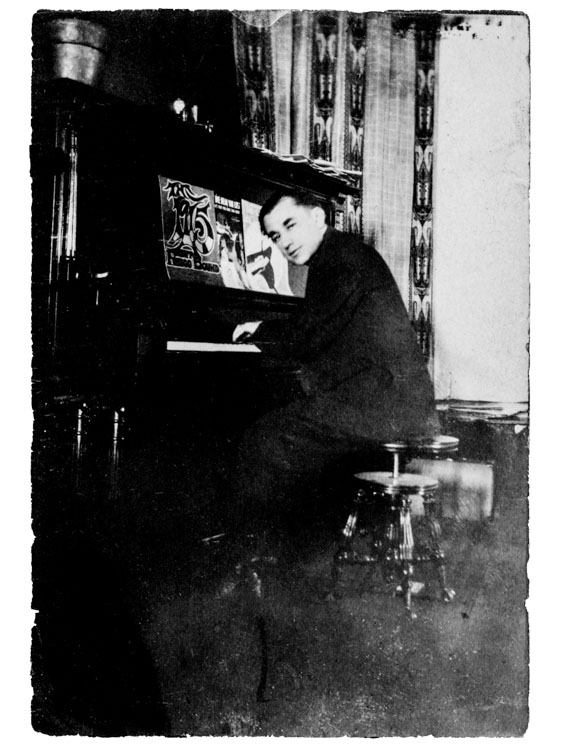 |
| Hammitt learned to play piano by ear and provided the sound for silent films shown in his family's movie theater. |
Hammitt was born in Spencer in 1893. His father, Franklin, started the town’s drug store in 1888 and worked both there and in Montrose. Franklin was preparing to move, buying a new house, drug store and theatre in Alcester, but he died in 1900, shortly after the purchases became final. His wife, Mae, and their five children still made the move. She hired a druggist and operated the movie theater, where DeeCort demonstrated his remarkable musical abilities to the rest of their new community. He had learned to play piano by ear and provided the sound for silent films.
Hammitt graduated from Alcester High School in 1912 and married Bessie Durkee from Alexandria in 1913. That same year, he composed a song called “The South Dakota Rag.” The Hammitts settled into life in Alcester, eventually raising 11 children. DeeCort worked at the McKellips family’s Alcester State Bank by day and served terms as the city treasurer and assistant postmaster. Music, however, remained his passion.
Hammitt formed the Sunshine State Music Company and continued writing music that found its way into the repertoires of bandleaders like Tommy Dorsey and Lawrence Welk. In 1915, the John T. Hall Music publishing company in New York selected his song “Don’t Take My Lovin’ Baby Away” as the winner in a nationwide songwriting contest with more than 1,500 entrants. Three years later, the Pace and Handy Music Company published a Hammitt song called, “I Want to Love You All the Time.” W.C. Handy, a composer and musician who often called himself “the father of the blues,” said it was one of the year’s best blues songs. His company advertised it as a “beautiful one-step ballad, different than the rest.”
Hammitt organized the Alcester Community Band in 1921 and directed it for 25 years. The group took regular trips to the Belle Fourche Roundup and played for President Calvin Coolidge when he and First Lady Grace Coolidge vacationed in the Black Hills in 1927. Hammitt wrote a piece called “The Roundup March,” and included special lyrics for Coolidge’s visit. The Alcester Community Band earned such a good reputation that it was chosen to represent South Dakota at the World’s Fair in Chicago in 1933 and 1934.
He also dabbled in radio, forming the Hammitt Radio Company in 1922, just two years after the nation’s first commercial radio broadcast originated in Pittsburgh. The inaugural program included a saxophone solo, a vocal solo, a men’s quartet and a poem recited by his son, Keith. Hammitt created weekly programs for several years, entertaining farmers within a 5- or 6-mile radius of Alcester.
A Chicago hat salesman eventually vaulted Hammitt to statewide prominence. Warner Putnam sold hats and other clothing around South Dakota. In 1941, he discovered that South Dakota did not have an official state song that could be performed at certain functions. He approached the Sioux Falls Argus Leader about organizing a statewide song contest.
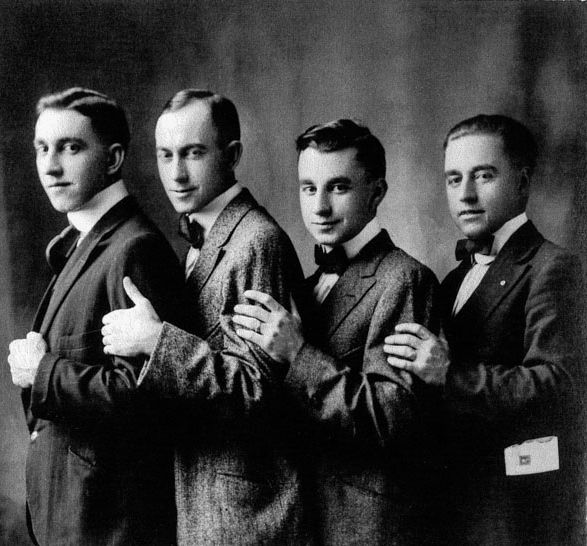 |
| The Hammitt brothers, from left: Ralph, Forest, DeeCort and Charles (Chick). |
The newspaper assembled a committee of judges headed by Carl Christensen, a professor and band director at South Dakota State College in Brookings. Out of 158 entries, the judges chose six finalists including “Hail, South Dakota,” a renamed version of a Hammitt favorite. “When he read about the contest, he knew that ‘The Roundup March’ would be the perfect song for our state song,” Baker says. “It remained a very popular song with marching bands in the years after 1927. He got a lot of traction out of ‘The Roundup March’ right up until the contest.”
Ballots were printed in all South Dakota newspapers. Radio stations in the state’s largest cities scheduled 30-minute blocks on January 9 and 10, 1942, during which all six entries were played. South Dakotans sent their ballots to the Argus Leader, where staff tallied the results and declared “Hail, South Dakota” the winner. Gov. Harlan Bushfield presented Hammitt with an award for composing the new state song, and the legislature made it official in March 1943.
To honor DeeCort after the contest, he and Bessie were the guests of honor at the South Dakota Press Association’s annual banquet in Sioux Falls. The new state song was performed in public for the first time since the contest concluded. “While Hammitt was pleased with the honor and attention the song received, he said he simply wanted to promote the state he loved,” a newspaper reported.
DeeCort and Bessie moved to California in 1947, where he continued to write and publish music. He operated the C&H Music Store in Sacramento with his son, Orlin, until his death in 1970.
*****
TODAY, 48 STATES have at least one state song. New Jersey never adopted one and Maryland retired its state song, “Maryland, My Maryland,” in 2021 because of language that was deemed inappropriate. Tennessee has the most with 10, including “Rocky Top,” which you’re likely to hear throughout University of Tennessee football games. Other states have adopted songs from popular culture as well. In 1979, Georgia chose “Georgia on My Mind,” written by Hoagy Carmichael but made popular by Ray Charles. John Denver’s “Take Me Home, Country Roads” became a state song of West Virginia in 2014. “Home on the Range” is among Kansas’s three tunes, and Louisianans sing “You Are My Sunshine.”
But since 1943, DeeCort Hammitt’s “Hail, South Dakota” has remained South Dakota’s stalwart single tune, though there have been occasional challenges. “A couple of times they’ve tried to change the state song,” Allard says. “They wanted a newer, livelier and more modern state song. Mom would just send more copies to the legislature.”
While it may not hold the place it once did in the state’s popular culture, it remains an important part of certain musical catalogs. Terry Beckler is a music professor at Northern State University in Aberdeen and commander of the South Dakota National Guard’s 147th Army Band. “I’ve played the state song many times. It’s the last part of a march titled ‘The Roundup,’” he says. “By regulation, military bands should play the last 32 bars of ‘Stars and Stripes Forever’ following ‘Ruffles and Flourishes’ for a governor. In South Dakota, tradition has been to play ‘Hail, South Dakota’ instead. We’ve done this for every governor, as long as I’m aware.”
For that, the Hammitt family can be proud.
Editor’s Note: This story is revised from the November/December 2022 issue of South Dakota Magazine. To order or to subscribe, call (800) 456-5117.


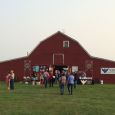

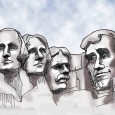





Comments